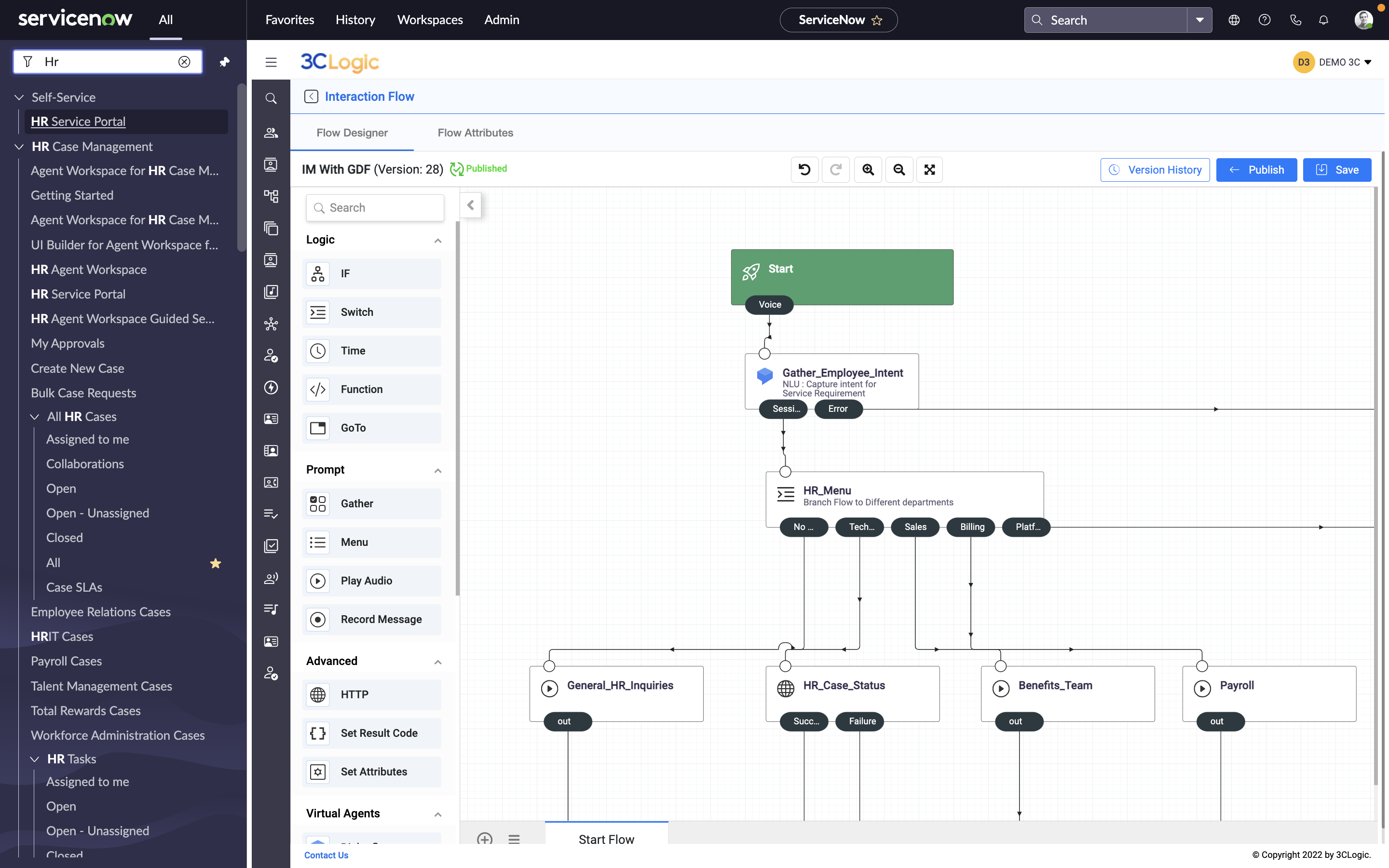In today’s evolving world of customer experience (CX), the voice channel continues to be a crucial connection point for businesses–case in point, 86% of Gen Zers prefer the phone as their primary channel for contacting customer service. As Voice AI technology continues to advance, contact centers are quickly learning how to leverage prompt engineering, as opposed to more traditional IVR workflow designs, to elevate customer engagements and achieve more favorable outcomes. In this blog, we’ll explore the significance of prompt engineering in the realm of Voice AI, its effects on contact center efficiency, and practical strategies for CX leaders to implement this approach to enhance the overall customer experience.
What is Prompt Engineering for Voice AI?
Prompt engineering in the context of Voice AI involves the design and optimization of verbal prompts that guide AI systems in understanding and responding to customer inquiries. It’s about crafting the right questions or statements that elicit accurate, helpful responses during voice interactions. In contact centers and service desks, effective prompt engineering can improve the quality of service provided in the voice channel, leading to enhanced customer satisfaction.
Key Elements of Prompt Engineering for Voice AI
Understanding Customer Intent:
- Analyze common voice queries to identify what customers often ask about.
- Use customer data and feedback to gain insights into their expectations.
Designing Effective Voice Prompts:
- Create clear and concise verbal prompts that are easy for customers to understand.
- Utilize natural language patterns that mimic human conversation for more relatable interactions.
Iterative Testing and Feedback:
- Continuously test prompts with real customer calls to assess their effectiveness.
- Collect feedback from both customers and agents to refine prompts.
The Impact of Prompt Engineering in Voice Channels
By crafting effective prompts, organizations can significantly enhance customer experience, improve AI performance, and drive continuous improvement. Some key benefits include:
Enhanced Customer Experience
Effective prompt engineering significantly enhances the customer experience by enabling Voice AI agents to deliver personalized responses. By recognizing a callers’ history and preferences (often enhanced via integration with an organization’s primary system of record or CRM), Voice AI agents can engage customers in a more relevant way. Additionally, well-crafted prompts lead to faster resolution times, as Voice AI agents quickly interpret and address issues, which reduces wait times and improves efficiency.
Improved Voice AI Performance
Prompt engineering enhances the accuracy of Voice AI responses. Careful design minimizes misunderstandings, resulting in more satisfactory interactions. A well-structured dialogue also helps reduce customer frustration, as callers receive relevant answers without unnecessary repetition or escalation.
Valuable Insights for Continuous Improvement
Prompt engineering enables data-driven insights for continuous improvement. Analyzing voice interactions allows organizations to refine prompts based on customer needs and preferences. This adaptability ensures that Voice AI evolves with changing expectations and language trends, leading to a more effective service overall.
Risks and Pitfalls of Prompt Engineering
While prompt engineering can greatly enhance the voice channel experience, there are several risks and pitfalls to be aware of. Some to be aware of include:
Overly open prompts that lead to inconsistent tone or hallucinations.
Solution: Constrain tone, format, and require citations or “I don’t know” fallback responses.
Embedding sensitive PII in prompts.
Solution: Use references and retrieve only necessary, masked information to protect customer privacy.
Ignoring agent feedback, which can lead to low adoption.
Solution: Include agents in the design process, provide easy feedback mechanisms, and iterate quickly based on their insights.
Lack of version control and rollback capabilities.
Solution: Implement a prompt/versioning system and utilize staged deployments to manage changes effectively.
Best Practices for Effective Prompt Engineering for Voice AI
To fully harness the potential of prompt engineering in voice AI, it’s essential to implement a series of best practices that can enhance accuracy and improve customer interactions. Here are key strategies to consider:
- Be explicit and behavioral: Clearly define the model’s role, expected tone, and output format. For example: “You are a courteous, concise CX agent. Provide a one-paragraph answer and a bullet list of 2 next steps.”
- Provide relevant context: Include customer metadata, conversation history, product info, and policy snippets to help the AI generate accurate responses.
- Constrain format: Utilize templates, JSON outputs, or fixed sections to make parsing predictable for downstream systems.
- Use examples (few-shot): Provide good and bad examples within the prompt, especially when tackling complex tasks, to guide Voice AI responses effectively.
- Limit creativity for safety: Adjust settings (like lowering “temperature”) for factual or compliance-sensitive prompts to minimize risks.
- Ground outputs: Combine retrieval-augmented generation (RAG) so that answers cite internal documents or quote knowledge snippets, helping to avoid hallucinations.
- Iteratively refine: Keep track of failures, collect agent feedback, and continuously improve prompts to enhance performance over time.
Conclusion
As contact centers increasingly rely on Voice AI, prompt engineering will play an increasing and critical role in enhancing customer interactions across voice channels. By focusing on crafting and optimizing effective voice prompts, CX leaders can significantly improve the quality of service provided to customers.
Implementing these strategies while being mindful of potential risks and adhering to best practices will help ensure that your contact center not only meets but exceeds customer expectations, fostering loyalty and paving the way for long-term success.




